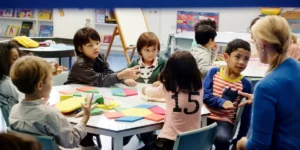Why Financial Literacy for Children Can No Longer Be an Option
In a world increasingly dominated by digital payments, credit cards, EMIs, and investment jargon, one question keeps coming up:
Are Indian children learning how to manage money?
Surprisingly, for a country leading in fintech adoption and digital banking, India is still lagging in financial literacy—especially among its youth.
The Current Reality: Are We Failing Our Future?
- Only 16.7% of Indian teenagers are financially literate, while just 27% of Indian adults understand basic money concepts (IBS Intelligence, 2023).
- 93% of young people in India express interest in learning about financial concepts, yet a significant majority don’t know where to start (Streak Survey, 2024).
- As per a report by IndiaSpend, only 38% of Gen Z in India grasp core ideas like credit, debt, savings, and budgeting.
The result? Poor money management, increased student debt, misuse of credit cards, and limited financial independence in early adulthood.
Why Early Financial Literacy Matters
Educating children about money is not just about numbers. It’s about:
- Building financial responsibility
- Teaching delayed gratification
- Preparing them for real-world decisions
- Reducing financial stress in adulthood
When kids learn how to budget, save, and invest early, they’re better prepared to handle the complexities of adulthood.
Encouraging Signs: India is Waking Up
Governments and educational institutions have begun recognizing the urgency of this issue. Some notable developments include:
✅ CBSE–NSE Partnership
Over 20 CBSE schools in Ludhiana now offer Financial Market Management as an elective in grades IX–XI. The curriculum includes modules on AI in investing, risk profiling, and real-world case studies.
(Source: Times of India)
✅ Delhi Government’s NEEEV Programme
Approved in 2024, NEEEV (Nurturing Entrepreneurship, Empowering Education and Vocational skills) empowers students in Grades 8–12 with entrepreneurship labs, budgeting simulations, and seed funding for school projects.
(Source: TOI Delhi)
✅ Uttar Pradesh’s Initiative for Girls
In collaboration with UNICEF and YuWaah, the Passport to Earning initiative aims to train 80,000 girls in financial and digital literacy across UP’s KGBV schools.
(Source: TOI Lucknow)
Global EdTech’s Role in Fixing the Gap
Today, we have platforms making financial literacy fun, interactive, and scalable:
- KidVestors (USA): Makes financial literacy fun for kids through animated storytelling and interactive games.
- GoHenry (UK): Empowers children with prepaid debit cards and real-time budgeting tools.
- Zogo Finance (US): Micro-lessons and rewards-based financial learning for teens.
These platforms offer a blueprint for India’s next big leap.
India’s Opportunity: What Needs to Happen Next?
1. Integrate Financial Literacy into Core Curriculum
From Grade 3 onwards, concepts like needs vs wants, savings, and investments should be embedded in Math and Social Science.
2. Train the Trainers
Teachers need focused modules and certifications to effectively deliver age-appropriate money education.
3. Leverage Technology
Gamified apps, simulations, and digital piggy banks can drive financial learning at home and in school.
4. Collaborate with Experts
Fintechs, EdTechs, and nonprofits must co-create content and delivery systems with government bodies.
A National Imperative, Not a Choice
According to OECD, less than 25% of Indian students can correctly answer basic questions about credit, savings, or interest. The gap is glaring.
(Source: OECD PISA Financial Literacy Assessment)
With India aiming to become a $5 trillion economy, ensuring our children are financially empowered is not a luxury—it’s a necessity.
Think About It…
- How can we ensure no child grows up without basic money management skills?
- Can schools balance academic rigour with real-world financial understanding?
- Who will lead this revolution—government, industry, or civil society?
Final Thought
Money management isn’t just for the rich. It’s for everyone.
Start with a child, and you shape a nation.





